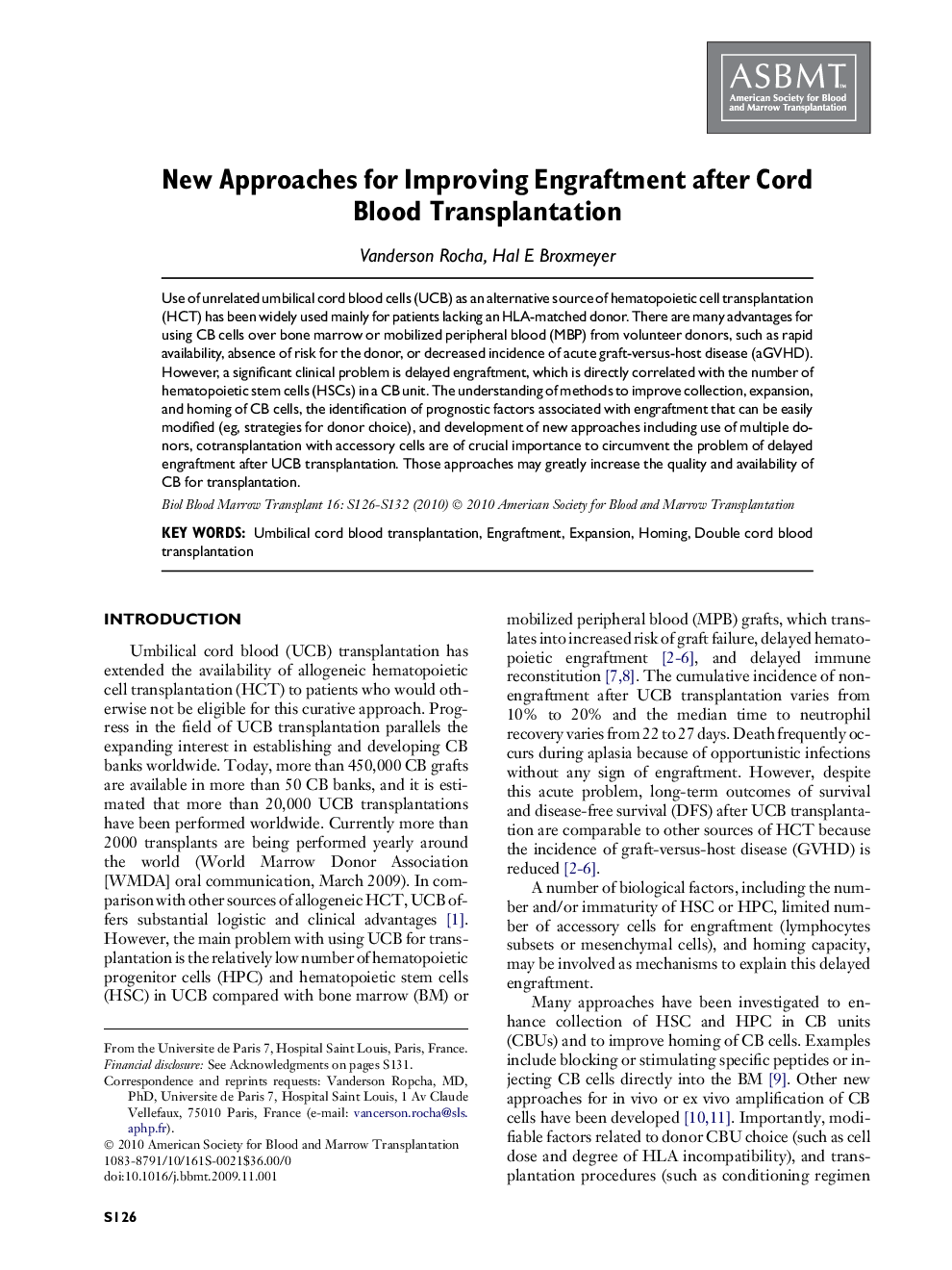| Article ID | Journal | Published Year | Pages | File Type |
|---|---|---|---|---|
| 2104076 | Biology of Blood and Marrow Transplantation | 2010 | 7 Pages |
Use of unrelated umbilical cord blood cells (UCB) as an alternative source of hematopoietic cell transplantation (HCT) has been widely used mainly for patients lacking an HLA-matched donor. There are many advantages for using CB cells over bone marrow or mobilized peripheral blood (MBP) from volunteer donors, such as rapid availability, absence of risk for the donor, or decreased incidence of acute graft-versus-host disease (aGVHD). However, a significant clinical problem is delayed engraftment, which is directly correlated with the number of hematopoietic stem cells (HSCs) in a CB unit. The understanding of methods to improve collection, expansion, and homing of CB cells, the identification of prognostic factors associated with engraftment that can be easily modified (eg, strategies for donor choice), and development of new approaches including use of multiple donors, cotransplantation with accessory cells are of crucial importance to circumvent the problem of delayed engraftment after UCB transplantation. Those approaches may greatly increase the quality and availability of CB for transplantation.
